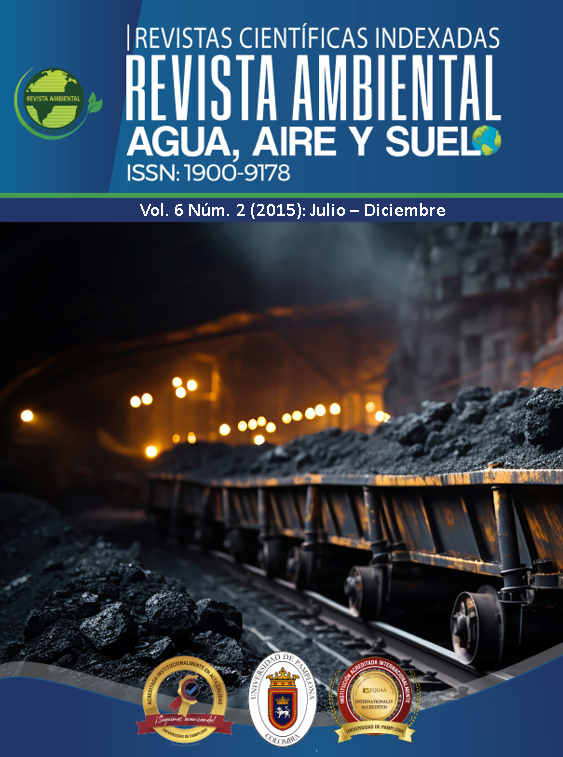Estimation of CO2 Emitted and Captured at the Sabanas Campus and the Sports Campus of the Universidad Popular del Cesar
DOI:
https://doi.org/10.24054/aaas.v6i2.805Keywords:
Gases de efecto invernadero, Emisiones y Captura de CO2, BiomasaAbstract
This work covers the estimations of CO2 emissions generated by the various existing sources at the Sabanas campus and the sports campus of the Universidad Popular del Cesar, and also presents the distribution of forest species, their physical and current condition, the amount of biomass contained in the trunks, and the carbon stored in them. The methodology was based on the use of emission factors with consumption for each service. CO2 emissions generated by mobile sources were estimated based on the emission factor according to their engine displacement and the distance traveled by vehicles on campus. The results show that for the year 2014, 47.67 tons of CO2/year were generated, with automobiles being the main source, contributing 24.49 tons of CO2/year to the atmosphere. On the other hand, the forest species present in both campuses have captured during their life cycle an equivalent of 39,364.03 tons of CO2. Additionally, species with higher carbon sequestration and fewer phytosanitary issues are suggested for future expansions of green areas on campus.
Downloads
References
Houghton, R., Skole, D., & Lefkowitz, D. (1991). Changes in landscape of Latin America between 1850 and 1985, II: Net release of CO2 to the atmosphere. Forest Ecology and Management, 38, 173-199. Elsevier.
Quijano, V. (2014). Genotoxicidad en el aire de Cúcuta, Colombia, en muestras del PM 2.5. Revista Agua, Aire y Suelo, 5(1). Universidad de Pamplona.
McDicken, K. (1997). A guide to monitoring carbon storage in forestry and agroforestry projects. Virginia: Winrock International Institute for Agricultural Development Forest Carbon Monitoring Program.
Organización Meteorológica Mundial. (2014). Boletín de la OMM sobre los gases de efecto invernadero. Boletín, Ginebra.
Vine, E., Sathaye, J., & Makundi, W. (1999). Guidelines for the monitoring, evaluation, reporting, verification, and certification of forestry projects for climate change mitigation. Ernest Orlando Lawrence Berkeley National Laboratory, 125. Berkeley.
Downloads
Published
Issue
Section
License
Copyright (c) 2021 REVISTA AMBIENTAL AGUA, AIRE Y SUELO

This work is licensed under a Creative Commons Attribution-NonCommercial 4.0 International License.










